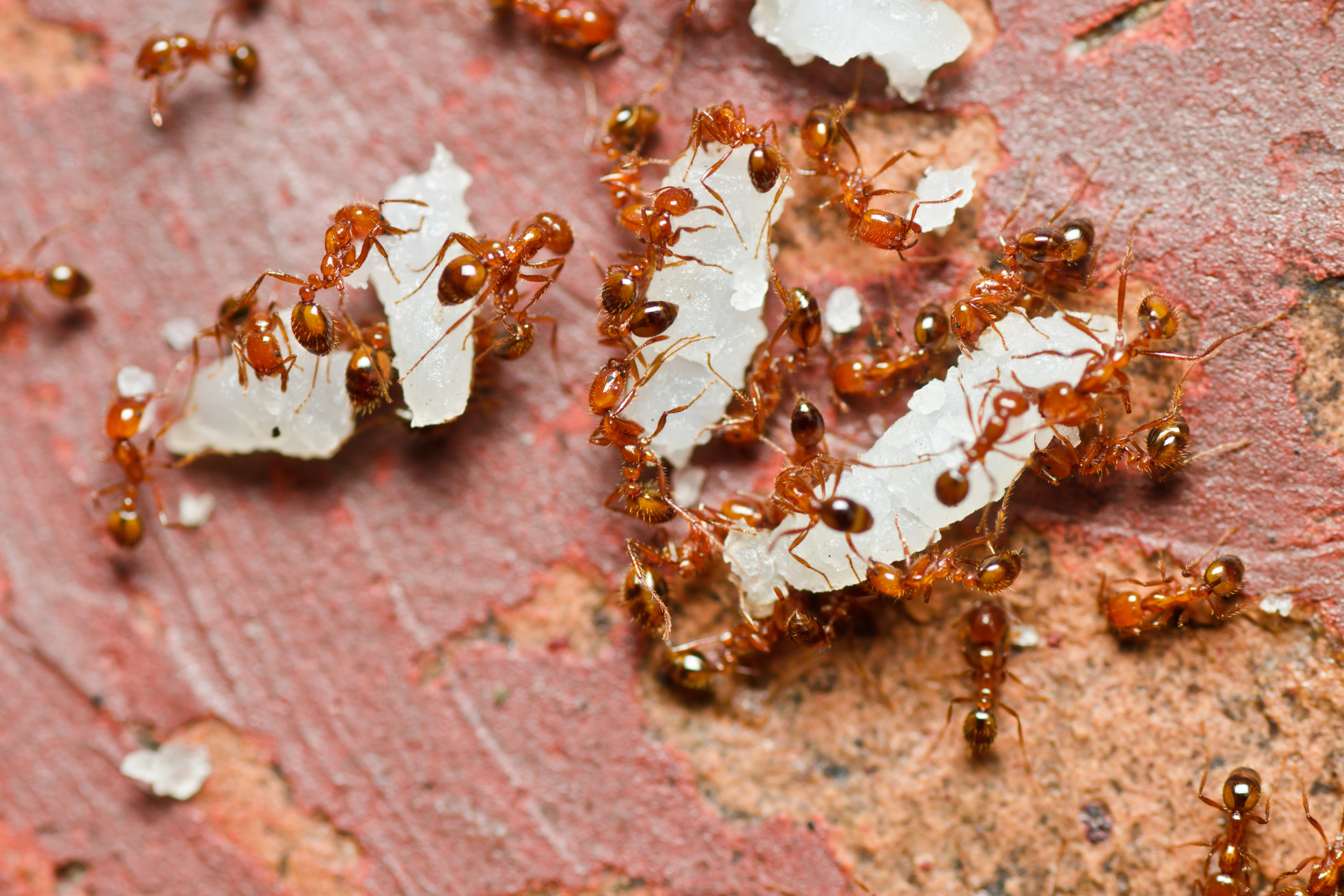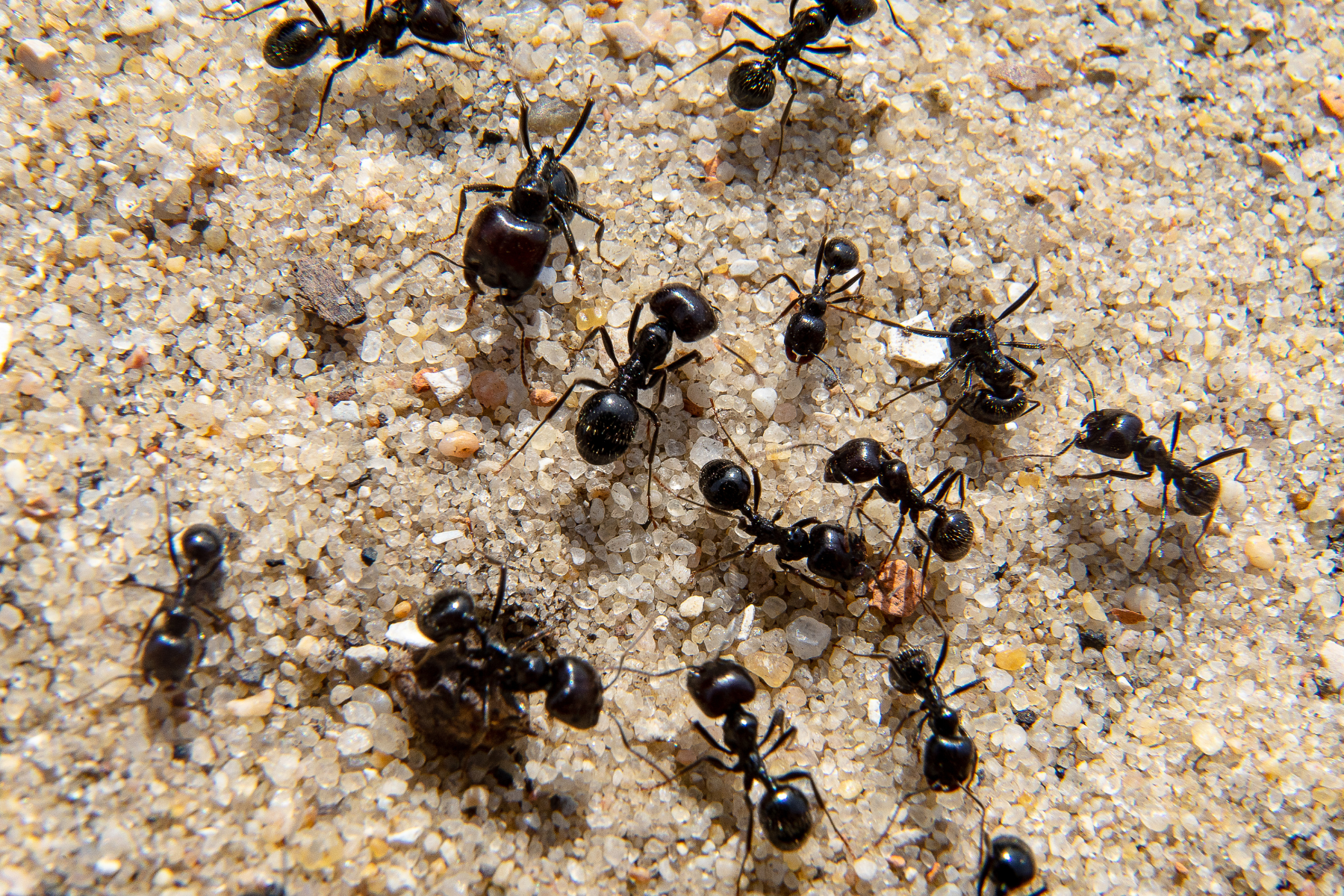The Arizona’s climate has made it ideal for many ants to persist. Others can only be a burden but they can actually endanger your health and property. There are different types of ants found in Arizona, so it’s a good thing to recognize them. There are the most common ants in each state. In this comprehensive guide, we will discuss the most commonly found ant species in Arizona, including their behaviors and the best prevention strategies to keep your environment ant-free.
Why Ants Are a Problem in Arizona
Did you know that the deserted climate of Arizona is the reason why ants are active all year? Combined with mild winters, your home and yards are a target point for infestations. They search for food, water, and shelter, just any pests. And once they succeed in their search for the right place, it’s time to build a great colony. The fire ants and carpenter ants are the ones that sting. They can also cause allergic reactions. Carpenter ants are known as destroyers of wood. So, let’s identify the different ants and know the best way to deal with them.
6 Common Ant Species Found in Arizona
1. Argentine Ants
- Appearance: Small (1/8″), dark brown to black
- Behavior: Form massive colonies with multiple queens
- Risk: Attracted to sweets and moisture; difficult to eliminate once established
2. Odorous House Ants
- Appearance: Small (1/8″), brown or black
- Behavior: Emit a rotten coconut smell when crushed
- Risk: Common household invaders that nest in wall voids and under floors
3. Pavement Ants
- Appearance: Dark brown to black, about 1/8″
- Behavior: Nest under concrete, sidewalks, and driveways
- Risk: Often invade kitchens and pantries searching for crumbs and sugary foods
4. Carpenter Ants
- Appearance: Large (up to 1/2″), black or reddish-black
- Behavior: Hollow out wood to build nests (don’t eat wood like termites)
- Risk: Can cause structural damage to homes and buildings
5. Fire Ants
- Appearance: Reddish-brown with darker abdomen, 1/8″ to 1/4″
- Behavior: Extremely aggressive; will sting repeatedly if threatened
- Risk: Stings cause painful welts and may trigger allergic reactions
6. Harvester Ants
- Appearance: Reddish or orange, large (up to 1/2″)
- Behavior: Build large nests in open, dry areas; collect seeds
- Risk: Painful stings; best avoided by humans and pets alike
How to Identify Ant Species at Home
Correct identification is important to solving an infestation effectively. Here’s how you can spot what you’re dealing with:
- Size and Color: Note differences in ant size and coloring, from tiny black odorous ants to large red harvester ants.
- Nest Locations: Carpenter ants prefer wood; pavement ants like concrete crevices; fire ants build mounds.
- Behavior: Watch for foraging trails, swarming activity, or sudden aggression.
- Smell Test: Odorous ants give off a strong scent when crushed.
If you’re uncertain, consider having a pest control expert conduct an inspection. Accurate ID saves time and ensures proper treatment.
Effective Prevention & Control Strategies
Clean Like You Mean It: Eliminate the Ant Buffet
Ants are always on the hunt for food, and your kitchen can quickly become their favorite dining spot. To prevent this, make it a habit to wipe down countertops and sweep floors every day, especially after meals. Crumbs, spills, and sticky spots are like magnets for ants. Store all pantry goods like sugar, cereal, and pet treats in sealed, airtight containers. And don’t forget your pets leaving food or water bowls out overnight is an open invitation for pests.
Lock the Doors: Stop Ants at the Source
Small cracks and gaps around doors, windows, and your home’s foundation can serve as easy entry points for ants. Use silicone-based caulk to seal these openings and keep pests outside where they belong. Repair any damaged window screens, and consider installing door sweeps to eliminate gaps under doors. These small fixes can make a big difference in keeping ants from sneaking in unnoticed.
Defend the Perimeter: Make Your Yard a No-Ant Zone
Your landscaping can either deter or invite ants to your doorstep. Start by trimming back tree branches, bushes, and shrubs so they don’t touch the house. These natural bridges often lead ants straight indoors. Clear away any standing water in plant saucers, buckets, or birdbaths, as moisture attracts ant colonies. Finally, be mindful of mulch: while it’s great for your plants, placing it too close to the house creates ideal nesting grounds for ants and other pests.
Natural Solutions You Can Try at Home
If you’re dealing with a minor or early-stage ant problem, there are several natural remedies that can help without resorting to harsh chemicals. While these DIY methods can be quite effective, especially for isolated infestations, it’s important to use them carefully in homes with young children or animals.
- A simple vinegar and water spray is effective at wiping out ant scent trails, making it harder for others to follow the path.
- For a more targeted approach, try creating a homemade ant bait using borax mixed with sugar ants are drawn to the sweetness, then carry the borax back to their nest, helping eliminate the colony over time.
- Essential oils like peppermint, tea tree, and citrus are also known to repel ants; just a few drops diluted in water can serve as a natural deterrent around entry points.
- Another option is food-grade diatomaceous earth, a fine, powdery substance that’s harmless to people and pets but deadly to ants by dehydrating them.
When to Call a Professional Pest Control Company
If you’ve tried multiple DIY remedies and the ants keep returning, it’s time to contact a licensed pest control company.
Professional services provide:
- Accurate species identification
- Targeted treatment plans
- Safer solutions for families with kids and pets
- Long-term prevention and monitoring
In Maricopa County, pest experts are familiar with the specific species that thrive in Arizona and use treatments suited for the desert environment.
Seasonal Tips for Year-Round Ant Control
- Spring: Check for early signs of nesting and apply preventative barriers.
- Summer: Ants are most active, step up kitchen cleanliness and outdoor maintenance.
- Monsoon Season: Seal entry points to keep ants from escaping flooded soil.
- Fall/Winter: Inspect indoors, especially basements, attics, and crawlspaces.
Testimonial: Peace of Mind Thanks to Spark Pest Control
“Living in Maricopa County, ants were a constant battle especially during the summer months. I tried every DIY solution out there, but nothing worked long-term. That’s when I called Spark Pest Control. From the first inspection, their team was professional, knowledgeable, and genuinely cared about keeping my home safe, especially with my two young kids and dog in the house. Not only did they identify the exact species causing the issue, but they also used pet-safe treatments that worked fast. I haven’t seen a single ant trail in weeks, and the peace of mind is priceless. Highly recommend!”
— Jessica M., Peoria, AZ
Kick Ants Out for Good
Ants are persistent, but so are we. At Spark Pest Control, we offer expert identification, eco-friendly treatments, and year-round protection tailored for Arizona homes. Whether you’re facing a tiny trail of sugar ants or a large carpenter ant infestation, we have the tools and expertise to help you reclaim your home. Call today or schedule your free home inspection online to keep your home pest-free the safe and smart way!
Frequently Asked Questions (FAQs)
1. What types of ants are most common in Arizona?
Common ant species in Arizona include Argentine ants, odorous house ants, pavement ants, fire ants, carpenter ants, and harvester ants. Each species has unique behaviors and nesting preferences.
2. How can I tell what kind of ants are in my home?
You can identify ants by observing their size, color, nesting locations, and behavior. For example, odorous house ants emit a bad smell when crushed, while carpenter ants are large and nest in wood.
3. Are carpenter ants a serious problem in Arizona?
Yes, carpenter ants can damage the structural integrity of homes by hollowing out wood to build nests. They do not eat wood like termites, but their presence still poses a serious risk.
4. What attracts ants to my home in the desert?
Ants are attracted to moisture, food sources (especially sweets and proteins), and shelter. Unsealed cracks, food crumbs, and standing water are common attractants.
5. Are fire ants dangerous in Arizona?
Yes, fire ants are aggressive and can sting multiple times, causing painful welts. In some individuals, their stings can cause severe allergic reactions and require medical attention.
6. Can I get rid of ants using natural methods?
Yes. Natural remedies like vinegar sprays, essential oils (peppermint, citrus), borax-sugar baits, and diatomaceous earth can help manage minor ant problems, though they may not eliminate entire colonies.
7. When should I call a professional pest control service?
You should call a professional when DIY methods fail, the infestation is recurring or widespread, or you are unsure of the ant species involved. Professionals provide accurate ID and long-term solutions.
8. Are pest control treatments safe for children and pets?
Most modern pest control companies, including Spark Pest Control, offer eco-friendly and family-safe options that are safe for children and pets when applied correctly.
9. How can I prevent ants from coming back?
Preventative steps include keeping your home clean, sealing entry points, storing food properly, fixing leaks, and maintaining your yard. Routine inspections can also help catch infestations early.
10. Do ant problems get worse during certain seasons in Arizona?
Yes, ants are most active in the spring and summer. However, because of Arizona’s mild winters, some species remain active indoors year-round making prevention and regular monitoring essential.



